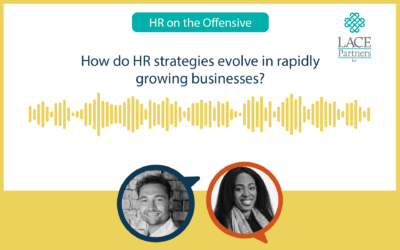We’ve seen (and written about) a number of articles in the press recently focusing on Protirees and other inactive workers, and discussing their desire or business’ need for them to return to work, including this recent article in The Times ‘Why Britain’s absent army are returning to work’ .
As businesses continue to assess the changes in the traditional workforce landscape that we have seen since the pandemic, we thought we’d touch on this concept of ‘return of the inactive workforce’ – workers who have voluntarily taken breaks from their careers to manage personal or carer obligations, pursue higher education, or deal with health-related issues. With the ongoing talent shortage and the recognised value of a diverse and skilled workforce, more and more media attention is turning to how companies are recognising the potential of tapping into this talent pool, and the value proposition that will get them through the door. Here we explore the reasons behind the resurgence of the inactive workforce and how businesses can benefit from embracing this group of individuals.
The rise of the inactive workforce
In a post-pandemic, always-on world of work, we cannot fail to notice a stronger desire from colleagues to balance their personal and professional lives in ways that work for them as individuals. We’ve experienced the ‘Great Resignation’, analysed ‘quiet quitting’ and we now understand that this too has passed! Next, we have to look ahead at how to tackle the current and ongoing skills and talent shortages. The critical question is How are we going to access the right talent pools to plug these gaps?
Whilst many organisations are focussing on developing their skills based approach to workforce planning and resourcing, another solution is to explore the inactive workforce as a talent pool. With the increased flexibility that many businesses are looking to build into their employee value propositions (EVP), the more progressive firms are realising the potential of revitalising that pool. And the more our inactive workforce see options that could work for them (providing balance, growth, challenge, income, etc) the more likely they are to explore opportunities that might now seem more accessible to them, creating a valuable talent pool.
So, what are they really looking for? Tempting the inactive workforce back could be down to the opportunities you can provide. The ability for people to learn and take on new skills, giving access to education and training (the increased prevalence of online courses and certifications is a key enabler) opens up opportunities for people of all ages, backgrounds and experiences. An inactive worker who has spent their career in banking before retiring early to become a chef is no longer an unrealistic ambition. The Lifelong Learning Bill passed earlier this year shows that the Government is trying to open up these opportunities, but the Lifelong Learning Entitlement (in which grants are offered to encourage this) isn’t due to come into effect until 2025 – there is still more to do to encourage this mindset.
In one of our HR on the Offensive podcasts earlier this year we spoke to Dr Tracey Brower about the links between happiness and engagement amongst employees. If an inactive workforce member has a passion that could be utilised in a business through reskilling in a new profession, or providing new skills, opportunity or challenge in their longer-term career organisations can harness this enthusiasm and the associated benefits of productivity gains and a highly engaged worker.
The challenge is finding the right people, with the right mindset, the right enthusiasm; all of which leads to greater engagement and value-add for any organisation that can leverage this untapped talent pool.
Accessing the inactive
The inactive workforce presents a unique opportunity for employers to tap into a diverse pool of experienced and motivated individuals. It is not an insignificant demographic either; the latest ONS data on economically inactive individuals from 16 – 64 shows that there are over 8.7million to May 2023. But how do you access, and engage with them?
For years, companies have relied on traditional recruitment methods to fill vacant positions, but with the scarcity of skilled talent, organisations are now turning to alternative sources to find candidates. Tapping into the inactive workforce pool requires something different, and that can be described through a compelling EVP, demonstrable commitment to their development and growth, appropriate recognition and a creative approach to attraction and selection.
Delivering the right promise
It sounds obvious, but being transparent about your approach to the when and where of work is critical for this talent pool. By their nature, they are more likely to be seeking flexible work arrangements, and there will be an expectation of autonomy about both of those factors. Alongside contractual terms and policy decisions, people managers need to be champions of flexible working arrangements and culturally, the organisation will need to be seen to enable and support them in practice.
Of course, not every business can offer such flexibility – the nature of the work simply may not be able to accommodate it. In these cases, the expectations must be very clearly set, and to attract the inactive worker, other elements of the proposition will need to be ‘dialled up’ – e.g., leave policies, development opportunities, etc.
Valuable skills
The inactive workforce bring two key opportunities relating to skills. Firstly, they may already have a skill set that is in demand in your business. It’s relevant, current and valuable to you, so attracting those skills back into the workplace will be important to you. Be transparent about that – highlight the value they bring, and the difference they can make, and seek to recognise that value.
Alternatively, they may bring an appetite to change career path, develop new skills, or use existing skills in a new way. Be clear about the opportunities that you are able to offer them, for learning, for career change / progression, for personal growth and fulfilment. Be clear in your attraction and selection materials about return-to-work programmes, provision of training and upskilling opportunities, and how you will candidates bridge the gap and update their knowledge where required.
Strength in diversity
Make it clear that the skills these inactive workers have are valuable, but that they will also benefit from investment to reskill/upskill (as mentioned above). Break down the perception barriers that individuals who have been away from the workforce for an extended period due to concerns about outdated skills.
Unconscious bias against individuals from the inactive workforce can hinder their chances of securing employment. Promoting a culture of inclusivity and actively challenging stereotypes during the selection process will be critical. Agile application methods, blind resume screening, diverse interview panels and neutral language in documentation, all led by leaders, colleagues and partners who are appropriately skilled and inclusion advocates, can help to mitigate biases and ensure fair selection. In addition, this demonstrates from early candidate engagement with inactive workers that you are an inclusive employer, focused on bringing in the right people with the right skills to do the job.
Recognising the value of the inactive workforce
The resurgence of the inactive workforce presents a unique opportunity for companies to tap into an underutilised talent pool. With the right value proposition in place, and their specific needs being met, they can become dedicated and loyal colleagues with a positive work ethic and fresh perspectives to bring to the table. By recognising the value that the inactive workforce brings and addressing potential challenges, companies can build a more inclusive and dynamic workforce that is well-equipped to thrive in the ever-changing world of work.
Embracing this trend is not only a strategic business decision but a morally right one too – taking a step towards creating a more equitable and supportive work environment for all.
If you’d like to talk to us about how the impact of your EVP can help to tap into inactive workers, fill in the form below and ask us to get in touch for a chat.






